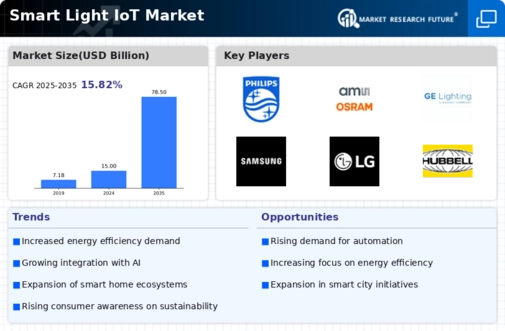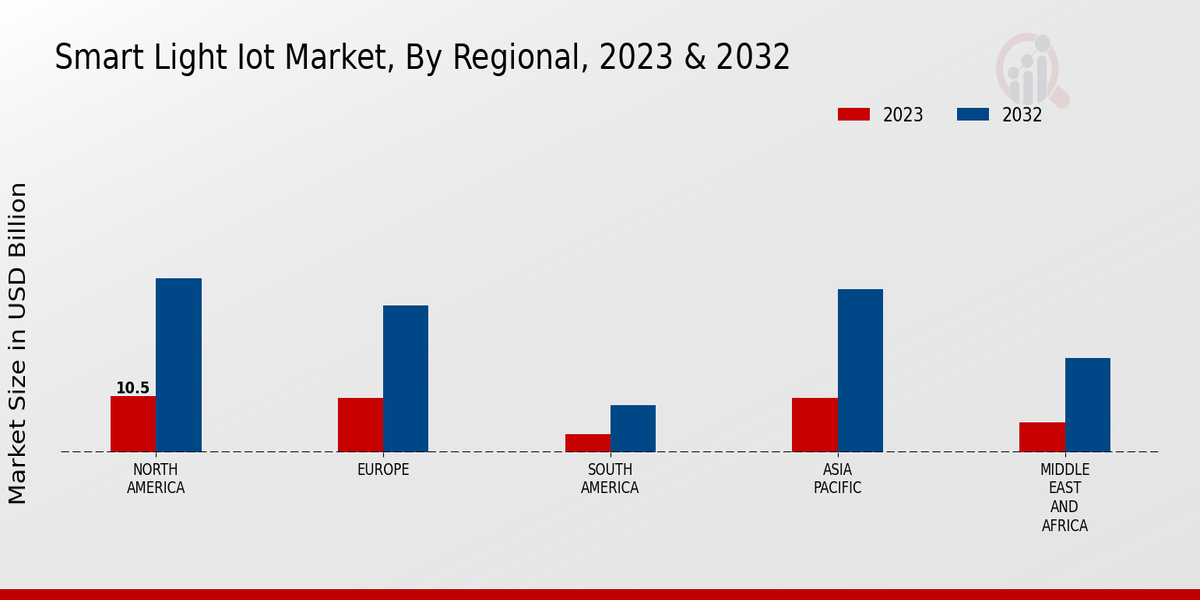Technological Advancements in IoT
Technological advancements in the Internet of Things (IoT) significantly impact the Global Smart Light IoT Market Industry. Innovations such as improved connectivity, enhanced sensors, and artificial intelligence integration enable smarter lighting solutions that adapt to user preferences and environmental conditions. These advancements facilitate the development of systems that can analyze usage patterns and optimize energy consumption. As technology continues to evolve, the market is likely to witness rapid growth, with a projected CAGR of 16.26% from 2025 to 2035, indicating a robust future for smart lighting solutions.
Integration with Smart Home Systems
The integration of smart lighting with broader smart home ecosystems significantly influences the Global Smart Light IoT Market Industry. As consumers increasingly invest in smart home technologies, the demand for compatible lighting solutions rises. Smart lights that can be controlled via smartphones, voice assistants, or automation systems enhance user convenience and energy management. This integration not only improves user experience but also encourages the adoption of smart lighting solutions. As a result, the market is expected to grow substantially, with projections indicating a rise to 78.5 USD Billion by 2035.
Rising Demand for Energy Efficiency
The Global Smart Light IoT Market Industry experiences a surge in demand for energy-efficient solutions as consumers and businesses alike seek to reduce energy consumption and costs. Smart lighting systems, which can be controlled remotely and programmed for optimal usage, are increasingly adopted in residential and commercial settings. In 2024, the market is projected to reach 15.0 USD Billion, reflecting a growing awareness of sustainability. This trend is likely to continue, with energy-efficient lighting solutions becoming a standard in new constructions and renovations, thereby driving market growth.
Government Initiatives and Regulations
Government initiatives aimed at promoting energy efficiency and sustainability play a crucial role in shaping the Global Smart Light IoT Market Industry. Various countries implement regulations that encourage the adoption of smart lighting technologies, providing incentives for consumers and businesses to transition to energy-efficient solutions. For instance, tax rebates and grants for energy-efficient upgrades stimulate market growth. These initiatives not only support environmental goals but also foster innovation within the industry, leading to the development of advanced smart lighting solutions that meet regulatory standards.
Growing Urbanization and Infrastructure Development
The trend of urbanization and infrastructure development is a key driver for the Global Smart Light IoT Market Industry. As urban areas expand, the demand for smart lighting solutions in public spaces, streets, and buildings increases. Smart lighting systems enhance safety, reduce energy costs, and improve the overall quality of urban life. Cities are increasingly adopting smart lighting to create more sustainable environments, which in turn drives market growth. This trend is expected to continue, with smart lighting becoming an integral part of urban planning and development strategies.

























Leave a Comment